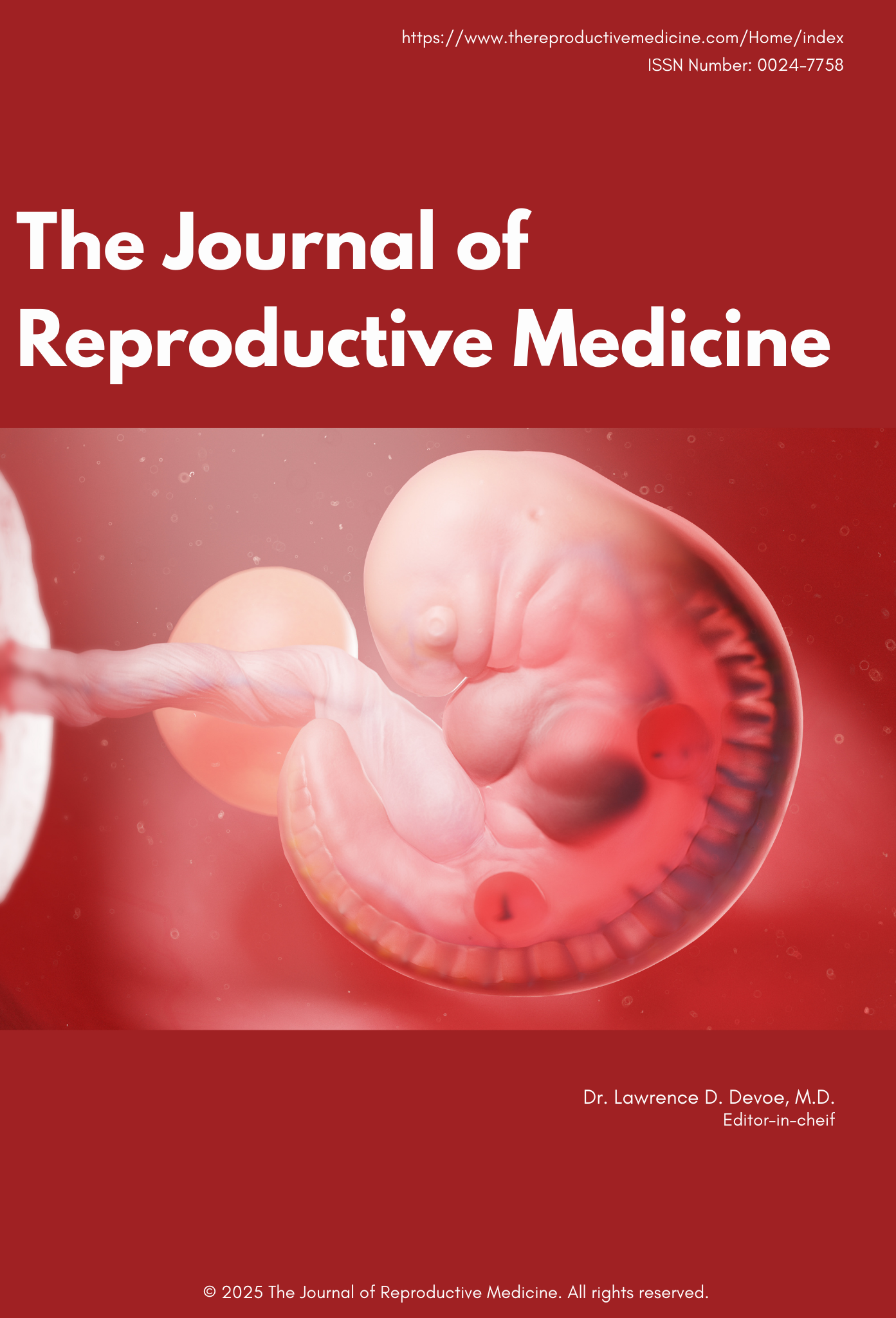Volume 57, Number 3, June2012
| Editorial | |
| 185 | |
|
|
|
| symposium | |
| Gestational Trophoblastic Disease: Presentations from the XVIth World Congress on Gestational Trophoblastic Diseases | |
| 187 | |
|
|
|
| 189 | |
|
|
|
| 197 |
M. Singh, M.D., D. Kindelberger, M.D., Z. Nagymanyoki, M.D., Ph.D., S.-W. Ng, Ph.D., C. M. Quick, M.D., H. Yamamoto, R. Fichorova, M.D., Ph.D., V. Fulop, M.D., Ph.D., and R. S. Berkowitz, M.D.
Vascular endothelial growth factors are altered in gestational trophoblastic disease and may be important in its pathogenesis.
|
|
|
|
| 204 |
A. Salerno, M.D.
In Italy a multicenter survey from 2005�2009 estimates an incidence of 0.5/1,000 pregnancies for complete hydatidiform mole and 0.013/1,000 pregnancies for choriocarcinoma.
|
|
|
|
| 207 |
E. I. Kohorn, M.Chir., F.R.C.S., F.R.C.O.G., F.A.C.O.G.
This article provides a critical analysis of imaging practices in gestational trophoblastic disease.
|
|
|
|
| 211 |
N. T. Shah, M.D., M.P.P., L. Barroilhet, M.D., R. S. Berkowitz, M.D., D. P. Goldstein, M.D., and N. Horowitz, M.D.
In the United States, using 8-day methotrexate/folinic acid for first-line treatment of low-risk gestational trophoblastic neoplasia can save society thousands of dollars per cure.
|
|
|
|
| 219 |
J. R. Lurain, M.D., and J. C. Schink, M.D.
Salvage therapy with platinum/etoposide�based chemotherapy regimens, often in conjunction with surgery to resect resistant foci of disease and/or irradiation of newly developed brain metastases, resulted in cure of 82% of high-risk GTN patients who failed initial multiagent chemotherapy and was ultimately responsible for survival of 53% of all high-risk GTN patients who were cured.
|
|
|
|
| 225 |
A. Braga, M.D., W. B. Growdon, M.D., M. Bernstein, M.H.P., I. Maest�, M.D., M. V. Cunha Rudge, M.D., D. P. Goldstein, M.D., and R. S. Berkowitz, M.D.
Adolescents with complete molar pregnancy have a lower risk of developing gestational trophoblastic neoplasia than do adults with complete mole.
|
|
|
|
| 231 |
Ma. S. F. S. Cagayan, M.D.
Discriminate use of the combined FIGO anatomic staging and the WHO prognostic scoring in the initial diagnosis of patients as well as better use of resources and adjunctive treatment have produced higher remission rates and better survival of patients with metastatic high-risk gestational trophoblastic neoplasia treated with the EMA-CO regimen.
|
|
|
|
| 237 |
J. A. Rauh-Hain, M.D., W. B. Growdon, M.D., A. Braga, M.D., D. P. Goldstein, M.D., and R. S Berkowitz, M.D.
There was no difference between adolescents and adult women in the rates of low-risk GTN, stage of GTN, and the frequency of resistance to initial chemotherapeutic treatment.
|
|
|
|
| 243 |
S. Kizaki, M.D., H. Matsui, M.D., H. Usui, M.D., M. Shozu, M.D., S. Hanawa, M.D., E. Yamamoto, M.D., and F. Kikkawa, M.D.
The use of a normal hCG regression curve after evacuation of a mole could better permit estimation of the risk for developing GTN in patients with poor hCG testing compliance.
|
|
|
|
| 249 |
G. Angelopoulos, M.D., J. E. Palmer, M.D., B. W. Hancock, M.D., and J. A. Tidy, M.D.
Unexplained persistently elevated low-level hCG is a rare condition estimated to have an 11�19% risk of malignant transformation and a 1�3% risk of mortality.
|
|
|
|
| 254 |
K. M. Elias, M.D., M. Shoni, M.D., M. Bernstein, M.P.H., D. P. Goldstein, M.D., and R. S. Berkowitz, M.D.
The New England Trophoblastic Disease Center experience treating women aged 40 to 49 with complete hydatidiform mole is reviewed, and specific treatment recommendations are offered.
|
|
|
|
| 259 |
T. Oge, M.D., S. S. Ozalp, M.D., T. G�ng�r, M.D., Y. Yildirim, M.D., M. Sanci, M.D., A. Dogan, M.D., I. E. Ertas, M.D., H. Yetimalar, M.D., S. Dilek, M.D., and C. Celik, M.D.
The incidence of molar pregnancy is 0.7/1,000 deliveries in Turkey. National case registry systems are necessary to overcome regional differences.
|
|
|
|
| 262 |
E. Ahamed, M.D., D. Short, B.Sc., B. North, Ph.D., P. M. Savage, M.D., Ph.D., and M. J. Seckl, M.D., Ph.D.
This paper demonstrates that survival of women with liver metastasis from gestational trophoblastic neoplasia is better than previously thought.
|
|
|
|
| Original Article | |
| 270 |
K. �lker, M.D., I. Temur, M.D., M. Karaca, M.D., M. Ers�z, M.D., I. Volkan, M.D., and A. G�l, M.D.
Maternal rest in the left lateral position is compared with mild activity, which results in an increase of amniotic fluid index.
|






